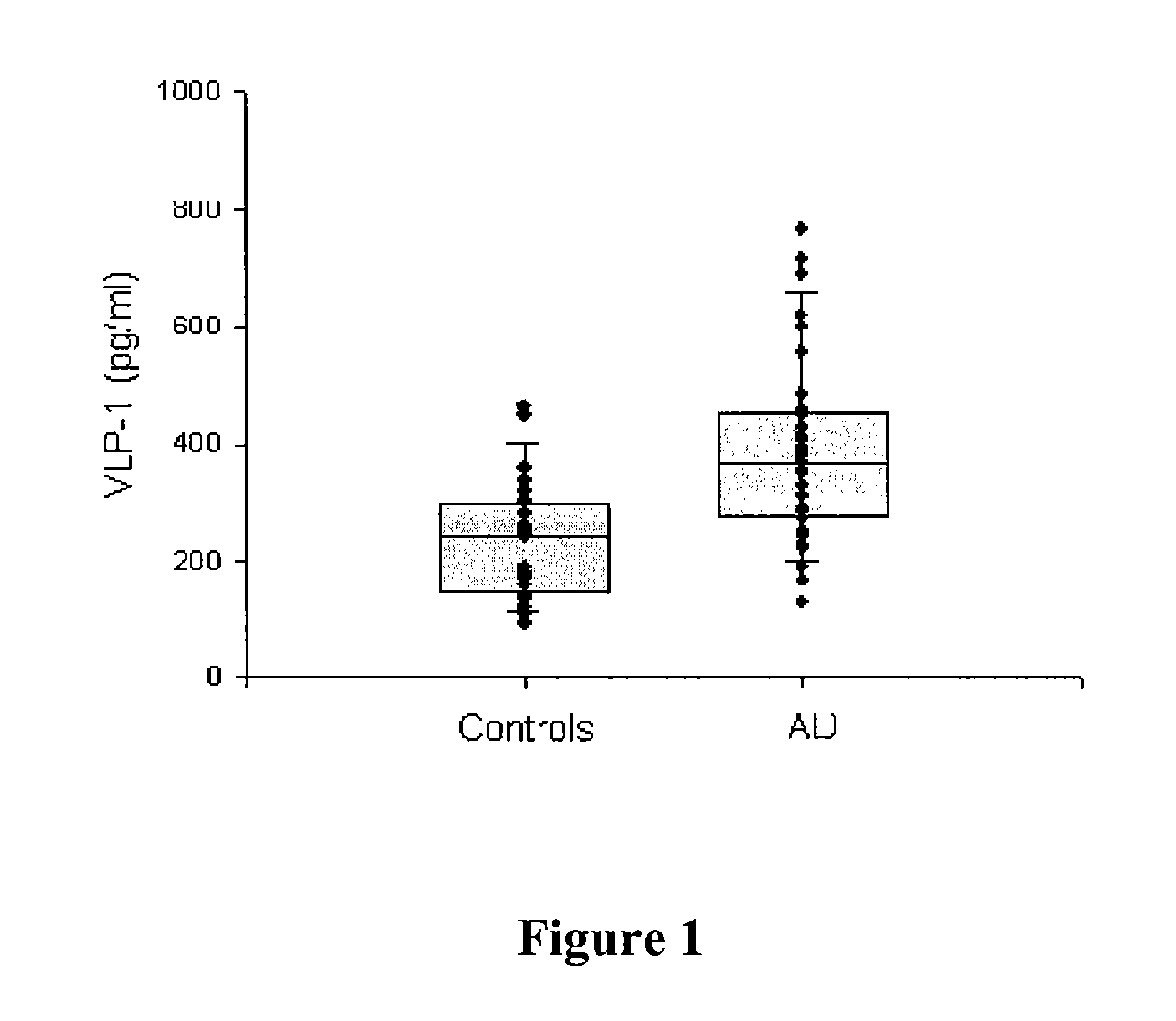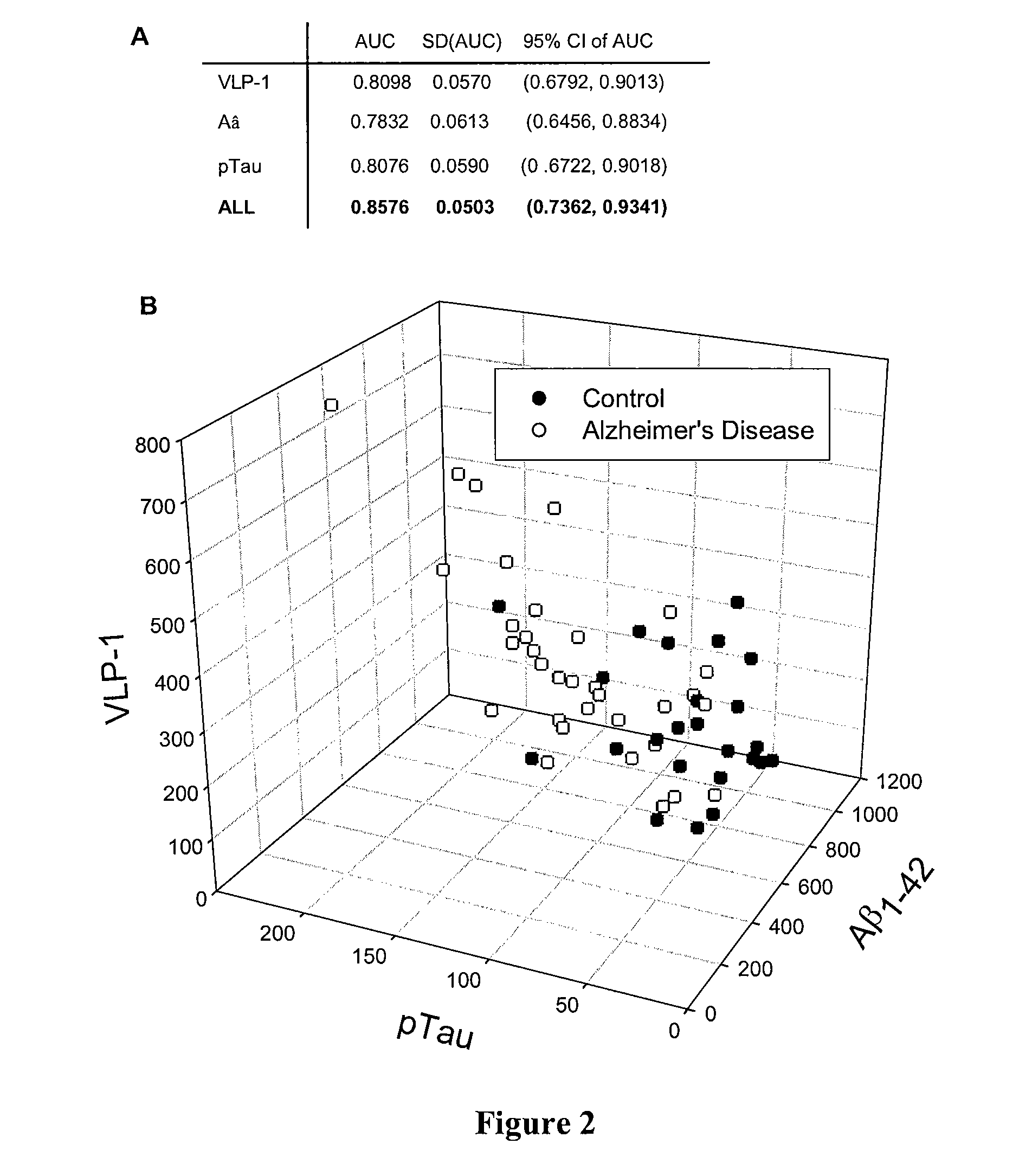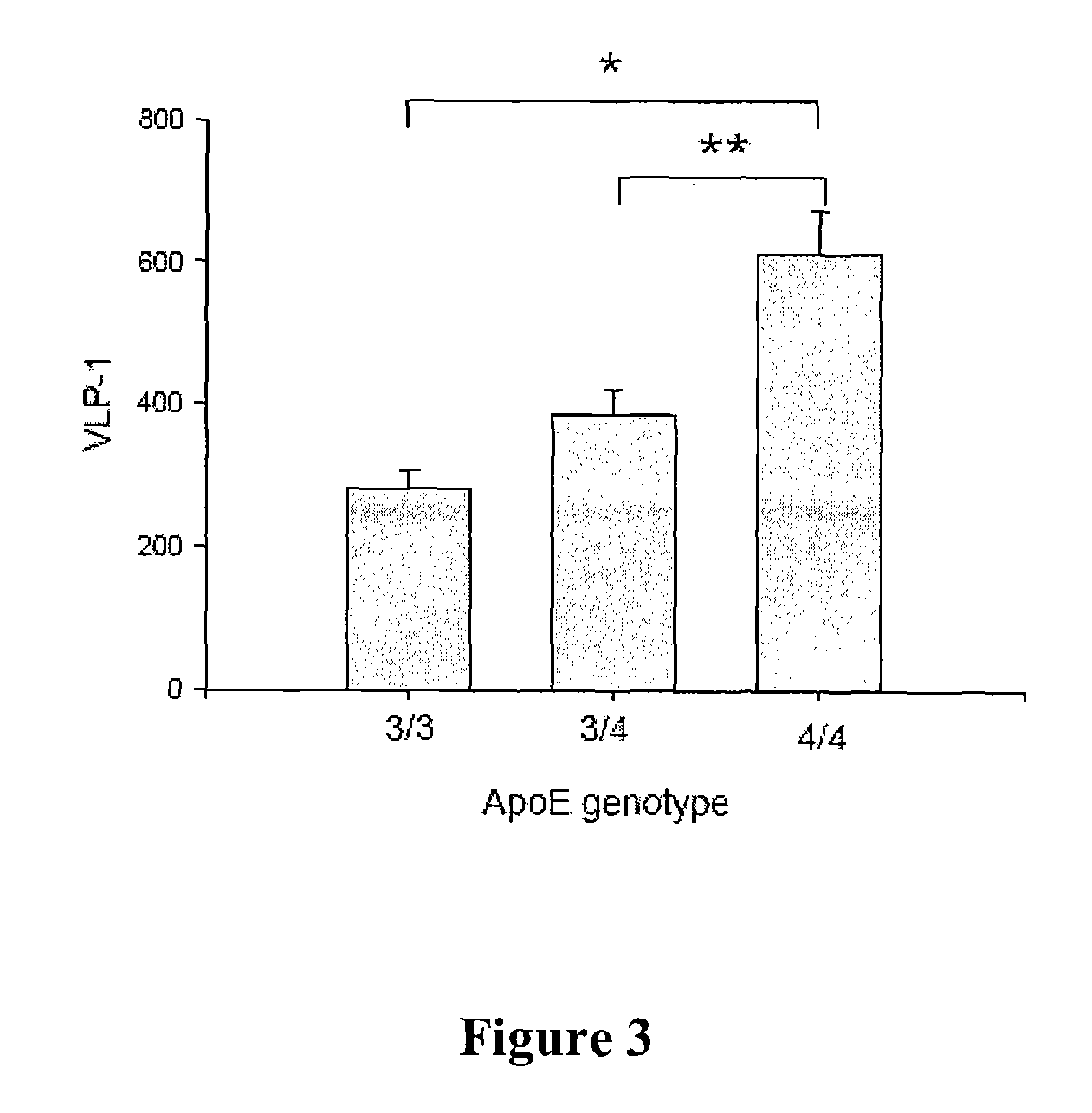Alzheimer's diagnosis
a technology for alzheimer's and dementia, applied in the field of alzheimer's diagnosis, can solve the problems of inability to develop a useful, definitive method, limit the utility of amyloid plaque load as diagnostic biomarkers, and lack of correlation between amyloid plaque load and the degree of dementia, so as to improve the diagnostic method
- Summary
- Abstract
- Description
- Claims
- Application Information
AI Technical Summary
Benefits of technology
Problems solved by technology
Method used
Image
Examples
example 1
Evaluation of Patients
[0024]Thirty-three (33) patients with a clinical diagnosis of AD (NINCDS-ADRDA criteria for probable AD) were evaluated. Twenty-four (24) healthy controls also participated and were free of neurological or psychiatric disorders. All subjects underwent a clinical evaluation which included a medical history, physical and neuropsychiatric evaluation, and a Mini-Mental State Examination (MMSE). ApoE genotype was also assessed. See Table 1.
TABLE 1Demographics of Study SubjectsNAgeFemaleDurationapoE4MMSEControls2468.5 ± 1.311 (46%)N / AND29.8 ± 0.1AD3364.9 ± 2.518 (55%)3.9 ± 0.42523.0 ± 1.1p value0.248
[0025]The mean age of subjects in each group did not differ significantly (controls: 68.5 years vs. AD 64.9 years). Gender distribution was also not significantly different (46% vs. 55%). The mean duration of disease in the AD group was 3.9 years. MMSE scores were assessed and were significantly lower in the AD group (23.0 vs. 29.8, p<0.001).
example 2
Determination of tTau, pTau, Aβ1-42, and VLP-1 Levels in CSF
[0026]CSF samples were collected by lumbar puncture at the L3 / L4 interspace. The first portion of the sample was discarded, and the subsequent 10 mls was collected in polypropylene tubes, centrifuged at 2,000 g for 10 min (to eliminate cells), and frozen in aliquots at −80° C. All samples had less than 500 erythrocytes / 4
[0027]CSF samples were assayed for total Tau (tTau) and hyperphosphorylated Tau (pTau at Thr-181), and Aβ1-42 using sandwich ELISA's, as previously described (Blennow, K., et al., Mol. Chem. Neuropathol. (1995) 26:231-245; Vanmechelen, E., et al., Neurosci. Lett. (2000) 285:49-52). CSF VLP-1 was measured using a sandwich ELISA (monoclonal antibody for capture and rabbit polyclonal antibody for detection), as described (Laterza, O. F., et al., Clin. Chem. (2006) 52:1713-1721).
[0028]The CSF tTau and pTau levels were significantly higher in AD patients compared to controls (pAnn. Neurol. (1995) 38:649-652; Blen...
example 3
Statistical Analysis of the Biomarkers
[0030]Differences in patient characteristics and biomarkers between two groups were compared using chi-square test or student's t-test as appropriate. ANOVA with a post-hoc Tukey's test was used for comparisons between multiple groups. The diagnostic ability of these biomarkers was evaluated using receiver operating characteristic (ROC) curves which plot true positive rates (sensitivity) versus the false positive rates (1-specificity) across all possible thresholds. As a global measure for the accuracy of diagnosis, the area under ROC curve (AUC) was also calculated for each individual biomarker as well as for an optimum linear combination of all biomarkers (Xiong, C., et al., Med. Decis. Making (2004) 24:659-669). All the statistical comparisons were implemented using the statistical package SAS (version 9) while all ROC analyses were performed with ROCKIT, a widely used freeware available from the Kurt Rossmann Laboratories at the University o...
PUM
| Property | Measurement | Unit |
|---|---|---|
| concentrations | aaaaa | aaaaa |
| area under ROC curve | aaaaa | aaaaa |
| affinity | aaaaa | aaaaa |
Abstract
Description
Claims
Application Information
 Login to View More
Login to View More - R&D
- Intellectual Property
- Life Sciences
- Materials
- Tech Scout
- Unparalleled Data Quality
- Higher Quality Content
- 60% Fewer Hallucinations
Browse by: Latest US Patents, China's latest patents, Technical Efficacy Thesaurus, Application Domain, Technology Topic, Popular Technical Reports.
© 2025 PatSnap. All rights reserved.Legal|Privacy policy|Modern Slavery Act Transparency Statement|Sitemap|About US| Contact US: help@patsnap.com



